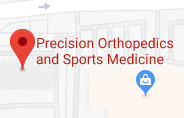 Shoulder
Shoulder
Rotator Cuff Tear
Rotator cuff is the group of tendons in the shoulder joint providing support and enabling wider range of motion. Major injury to these tendons may result in tear of these tendons and the condition is called as rotator cuff tear.
For more information about Rotator Cuff Tear, click on below tabs.
Shoulder Impingement
Shoulder impingement is also called as swimmer’s shoulder, tennis shoulder, or rotator cuff tendinitis. It is the condition of inflammation of the tendons of the shoulder joint caused by motor vehicle accidents, trauma, and while playing sports such as tennis, baseball, swimming and weight lifting.
For more information about Shoulder Impingement, click on below tabs.
Frozen Shoulder
Frozen shoulder is a condition of painful shoulder with limited movement because of pain and inflammation. It is also referred as adhesive capsulitis and may progress to the state where an individual may feel very hard to move the shoulder.
For more information about Frozen Shoulder, click on below tabs.
Shoulder Instability
Shoulder instability is a chronic condition that causes frequent dislocations of the shoulder joint. A dislocation occurs when the end of the humerus (the ball portion) partially or completely dislocates from the glenoid (the socket portion) of the shoulder. A partial dislocation is referred as subluxation, whereas the complete separation is referred as dislocation.
For more information about Shoulder Instability, click on below tabs.
Shoulder Dislocation
Playing more overhead sports activities and repeated use of shoulder at workplace may lead to sliding of the upper arm bone, the ball portion, from the glenoid–the socket portion of the shoulder.
For more information about Shoulder Dislocation, click on below tabs.
Clavicle Fracture
The clavicle is the bone that connects your sternum or breastbone to your shoulder. Clavicle fracture, also called broken collarbone is a very common sports injury seen in people who are involved in contact sports such as football and martial arts as well as impact sports such as motor racing.
For more information about Clavicle Fracture, click on below tabs.
Shoulder Separation
Acromioclavicular joint (AC joint) dislocation or shoulder separation is one of the most common injuries of the upper arm. It involves separation of the AC joint and injury to the ligaments that support the joint. The AC joint forms where the clavicle (collarbone) meets the shoulder blade (acromion).
For more information about Shoulder Separation, click on below tabs.
Shoulder Joint Arthritis
The term arthritis literally means inflammation of a joint, but is generally used to describe any condition in which there is damage to the cartilage. Damage of the cartilage in the shoulder joint causes shoulder arthritis. Inflammation is the body’s natural response to injury. The warning signs that inflammation presents are redness, swelling, heat and pain.
For more information about Shoulder Joint Arthritis, click on below tabs.
Proximal Humerus Fractures
Humerus is the upper arm bone and it forms two joints —shoulder joint and elbow joint. The proximal humerus is the upper end of arm bone that forms shoulder joint. Fractures of proximal humerus are common in elderly individuals suffering from osteoporosis.
For more information about Proximal Humerus Fractures, click on below tabs.
Shoulder Labral Tear
The shoulder joint is a “ball and socket” joint that enables the smooth gliding and thereby the movements of arms. However it is inherently unstable because of the shallow socket. A soft rim of cartilage, the labrum lines the socket and deepens it so that it accommodates the head of the upper arm bone better.
For more information about Shoulder Labral Tear, click on below tabs.
Shoulder Arthroscopy
Shoulder arthroscopy is a surgical procedure in which an arthroscope is inserted into the shoulder joint. The benefits of arthroscopy are smaller incisions, faster healing, a more rapid recovery, and less scarring. Arthroscopic surgical procedures are often performed on an outpatient basis and the patient is able to return home on the same day.
For more information about Shoulder Arthroscopy, click on below tabs.
Shoulder Joint Replacement
Shoulder joint replacements are usually done to relieve pain and when all non-operative treatment to relieve pain have failed.
For more information about Shoulder Joint Replacement, click on below tabs.
Click on the topics below to find out more from the orthopedic connection website of American Academy of Orthopaedic Surgeons.
- The Shoulder
- Arthritis of the Shoulder
- Broken Collarbone
- Dislocated Shoulder
- Fracture of the shoulder blade (scapula)
- Frozen Shoulder
- Rotator Cuff Tears
- Separated Shoulder
- Shoulder Impingement (Bursitis, Tendinitis)
- Shoulder Joint Replacement
- Shoulder Joint Tear (Glenoid Labrum Tear)
- Thoracic outlet syndrome
- Shoulder Arthroscopy
2120 N. MacArthur Blvd
Suite 100
Irving, TX 75061
 Ph: (972) 438 4636
Ph: (972) 438 4636
 Fax:
(972) 438 2077
Fax:
(972) 438 2077

 Make an Appointment Online
Make an Appointment Online

 Elbow
Elbow Wrist
Wrist Hand
Hand Patient Education
Patient Education Testimonials
Testimonials Map
& Location
Map
& Location Patient Forms
Patient Forms






